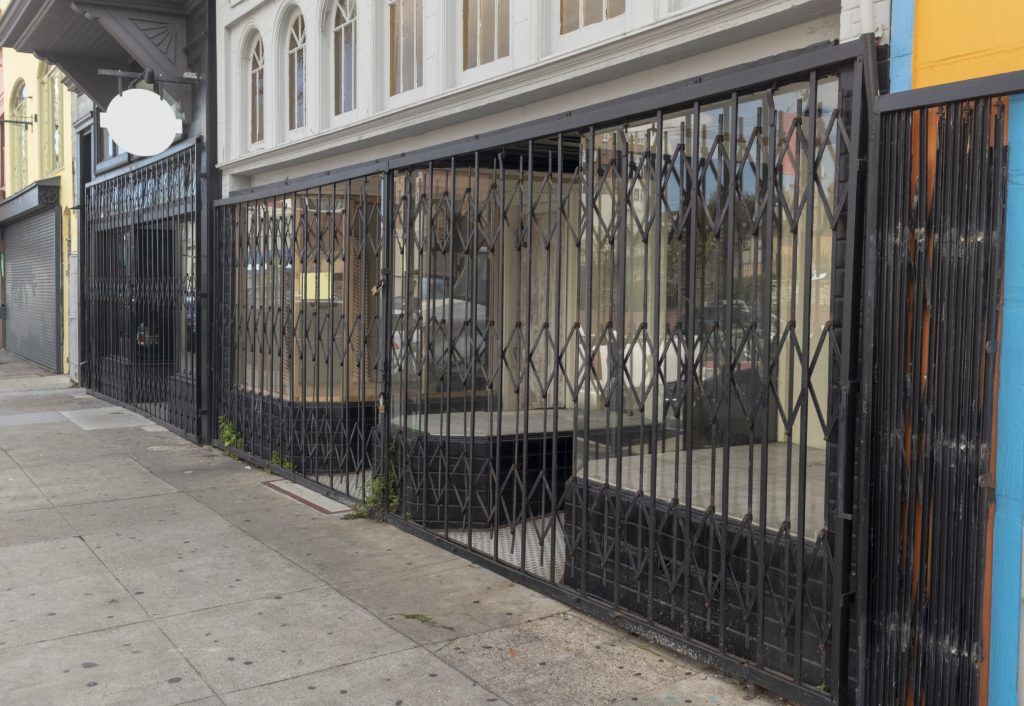GUEST EDITORIAL: WHAT DOESN’T KILL YOU…


Since you’re reading this in the fourth quarter of 2020, you’ve managed to survive the many obstacles thrown your way during this unprecedented year. Economic shutdowns, riots and protests, mask mandates, social distancing requirements, as well as freaked out customers and concerned employees.
The financial aspect of how to navigate these challenging times is surely a subject of focus as we close out this turbulent year and approach 2021 with hopes of “normalcy”, whatever that means going forward.
Longing for Yesteryear
Step back in time for a moment to the golden days of retail. A time when merchants actually traveled to markets and trade shows to physically meet with vendors and colleagues to exchange ideas and buy merchandise for the upcoming season. A time when customers could enter your store and be greeted with a welcoming smile as opposed to being handed a mask lest they absent-mindedly entered minus a required face covering. Returned merchandise was simply put back in stock, not subjected to mandatory quarantine and disinfection protocols. Yes, back in the day, marketing efforts were actually measured by how many customers could be enticed to shop the store during a given event or promotion. Imagine doing that today as retailers are told to restrict the number of customers entering.
Not long ago, you could actually shake someone’s hand or greet them with a hug. Try that today and you could become the target of a negative social media campaign. The days when you entered a retail store and were offered a cup of coffee or a bottle of water have been replaced with offerings of hand sanitizer and masks. Whoever heard of curbside pickup prior to this year? And hoteling once meant finding a place to stay when traveling, not packing up this year’s goods to sell next year.
It’s Not All Bad
One might compare this year to a forest fire: seemingly catastrophic at first but over time, green shoots of new life appear through the carnage.
Many retailers have stretched and grown to find new ways to do business. Take for example the retailer who, for whatever reason, didn’t feel the need for a shopping cart on their website. Clearly, without the ability to purchase online during “pandemic times,” those retailers were/are at a disadvantage.
What about the solidarity we witnessed as retailers, vendors, and landlords worked in unison, for the most part, all recognizing that we’re in this situation together? Let’s not forget our government, whose quick response through the PPP forgivable loans and other lending programs brought much-needed relief to many.
We’ve also seen retailers become more introspective with regard to their largest asset–inventory. Some have been able to pick up new lines they previously couldn’t get. Most have realized that CASH is KING is not just a clever slogan, but a reality by which to live.
A good margin percentage is important, but you can’t put a percent in the bank! It doesn’t mean a thing if no one is buying. Retailers have discovered that less is more. I can cite several examples where stores are selling more than last year with much less inventory and way fewer markdowns. Who would have thought?
The 80/20 Rule
Often referred to as Pareto’s Principle, named for the Italian economist who in 1906 created the mathematical formula, after observing that 80 percent of the wealth was controlled by 20 percent of the people. Think of your own business as you read this. Where do the majority of your sales really come from? More or less, 80 percent of your sales come from 20 percent of your stock. Close to 20 percent of the vendors you carry supply 80 percent of the inventory you have. If you take an honest look at your inventory position, you will undoubtedly find pockets of stock (or vendors) that you don’t really need. These pockets, overlooked when times are good, should be identified and eliminated as they contribute little to overall profitability. Now is the perfect time to again evaluate ALL vendors based on GMROI contribution so that you have the data to make the right decisions.
Give Yourself a Pass
Few would argue that the path to retail success would likely be revenue growth coupled with inventory turnover. This year, however, for reasons that are all too obvious, top-line revenue growth is turning out to be a near impossibility. It’s human nature to compare to previous periods and want to improve, but this year is an outlier. In some cases, where new goods never received the exposure that they deserved, it might make sense to “hotel” them for next year. Clearly, if done on a large-scale basis, this will affect turnover, just as liquidating new stock at drastic reductions has a profound effect on margin. You have to decide, based on your own situation, which is the best route for you.
Holiday Shopping 2020
There are simply too many unknowns this year for anyone to predict now how Holiday shopping will be impacted. Suffice to say that the experience will be different from years past. What you won’t see is smiling customers and packed stores due to masking requirements and social distancing. What you might see is earlier shoppers and less discounting, perhaps due to leaner inventory levels and delivery interruptions. What you will see is an increase in online shopping. It is widely reported that more stores will be closed on Thanksgiving– which in my opinion, is a good thing! In such an unpredictable season, prudence would dictate that keeping cash reserves plentiful and inventory levels lean would be the responsible thing to do.
Don’t be too hard on yourself. Play the cards you are dealt the best that you can and move forward. And by all means, don’t hesitate to reach out for an outside opinion if you think there might be a better way. We truly are all in this together!
—
Ritchie Sayner is with Advanced Retail Strategies, LLC, an affiliate of Management One. You can reach him at ritchie@arsotb.com.








